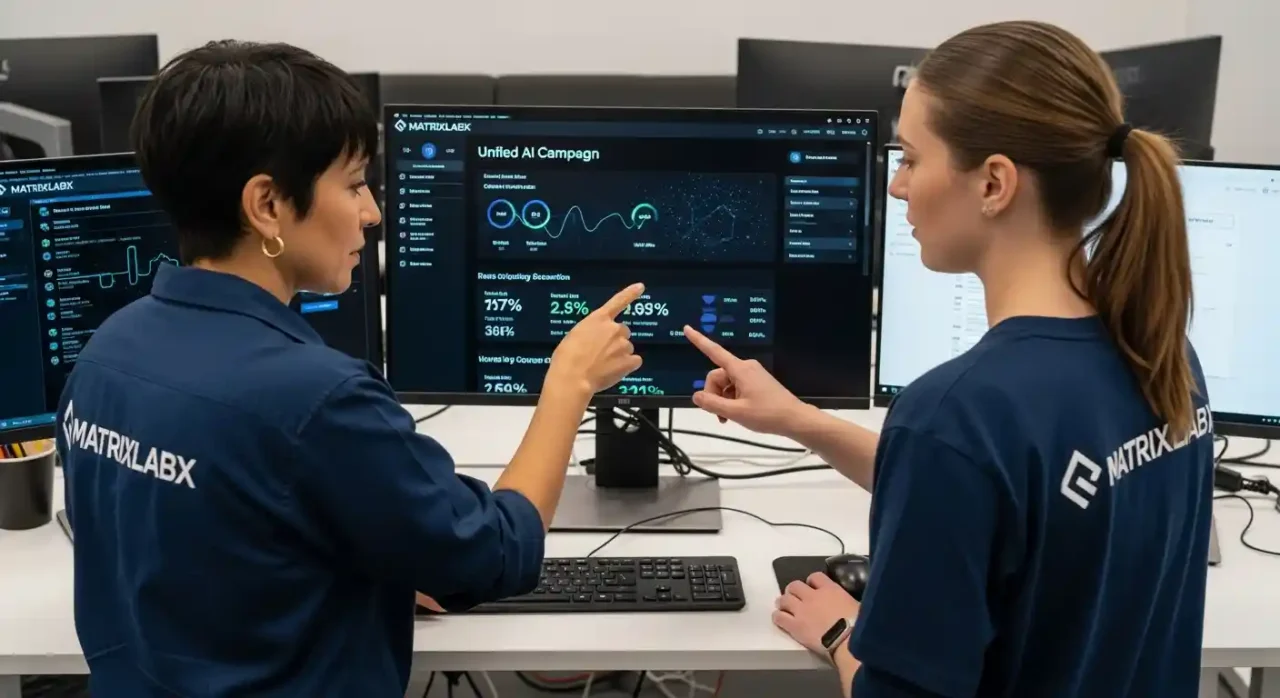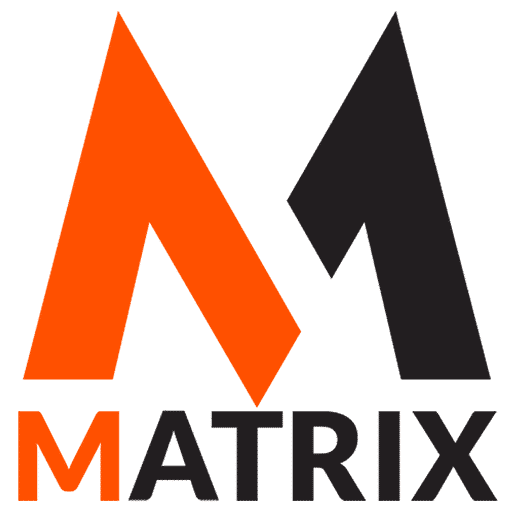AI-Powered Campaign Execution + Search Visibility in Emerging AI Tools
Learn About AI-Powered Campaign Execution + Search Visibility in Emerging AI Tools.
In the rapidly evolving digital landscape, forward-thinking marketers are seizing the power of AI to launch campaigns with unprecedented speed and secure a dominant position in the emerging AI-first search engine ecosystem.
While many competitors are still vying for visibility on Google’s Page 1, the savviest marketers are already turning their attention to the future—AI search assistants like ChatGPT, Gemini, Claude, and Perplexity are reshaping how consumers discover and engage with brands.
Imagine executing a marketing campaign that reaches your audience faster and positions your brand at the forefront of AI-driven search visibility.
This is no longer a futuristic concept; it’s a reality for those embracing AI-powered tools. By leveraging cutting-edge technology, these marketers are bridging the gap between performance marketing and organic growth, crafting strategies that resonate with the algorithms of tomorrow.
AI tools are transforming campaign execution, offering insights and automation that streamline processes and enhance creativity. This allows marketers to focus on strategic innovation and craft messages that captivate and convert.
However, the true game-changer lies in understanding and adapting to the AI-first search engines that are becoming the new norm.
Marketing managers eager to stay ahead of the curve have a clear opportunity: harness AI to redefine your campaign strategy and secure your brand’s place in the AI-driven search landscape. As the digital world pivots towards these advanced platforms, those who adapt quickly will survive and thrive, leaving competitors grappling with outdated tactics.
Embrace this shift and position your brand as a leader in the new era of AI-powered marketing.
- According to a recent Gartner report, 58% of marketing teams feel overwhelmed by the manual execution required across fragmented channels. This highlights the urgent need for automation and integrated solutions.
- A Forrester study indicates that 67% of brands struggle to maintain visibility in an AI-dominated search landscape, as traditional SEO strategies become less effective against evolving AI algorithms.
- McKinsey’s latest research reveals that companies failing to adapt to new AI tools in search and advertising risk a 30% decline in digital performance due to inefficient workflows and outdated practices.
Marketing Teams Overwhelmed by Manual Execution Across Fragmented Channels

In today’s fast-paced digital landscape, marketing teams face significant challenges managing manual execution across fragmented channels. With multiple platforms requiring constant attention, the burden on marketers is immense.
Coordination of campaigns across social media, email, and search engines is complex, leading to inefficiencies and decreased productivity.
This fragmentation drains resources and hinders maintaining a cohesive brand presence.
Struggling to Stay Visible in a Rapidly Evolving AI-Dominated Search Landscape
The search landscape is dramatically transforming with the rise of AI technologies. Traditional SEO strategies are becoming obsolete as AI-driven algorithms prioritize different metrics.
Marketers struggle to adapt to these changes, resulting in decreased visibility in search results.
As AI tools like ChatGPT and Google’s BERT reshape how search engines understand content, brands must innovate or risk losing their competitive edge.
New AI Tools Disrupt the Traditional Search and Ad Ecosystem
AI is not just influencing search algorithms; it’s also disrupting the traditional ad ecosystem. AI-powered tools offer unprecedented targeting capabilities, enabling brands to reach their audience more precisely. However, this disruption comes with challenges.
Brands that rely on outdated strategies find themselves at a disadvantage.
Real-time data analysis and adaptive strategies are critical as AI tools evolve and redefine the digital marketing landscape.
Brands Risk Falling Behind Due to Inefficient Workflows and Outdated SEO Strategies

Inefficient workflows and outdated SEO strategies pose significant brand risks in this new era.
As AI technologies advance, the gap between innovative and traditional marketing strategies widens.
Brands that fail to embrace AI-driven solutions risk falling behind more agile and adaptive competitors. The need for streamlined workflows and up-to-date SEO practices is more pressing than ever.
Adapt or Get Left Behind: How AI is Reshaping Marketing Execution and Search Dominance
The message is clear for CMOs, CROs, RevOps leaders, and SaaS buyers evaluating platforms: adapt or get left behind. AI is reshaping marketing execution and search dominance, offering opportunities for those willing to embrace change.
Integrating AI into marketing processes enables faster decision-making, enhanced customer insights, and more effective campaign management.
Forward-thinking leaders leverage AI to optimize their strategies, ensuring their brands remain visible and competitive.
In conclusion, the digital marketing landscape is undergoing a profound transformation. To thrive, brands must embrace AI technologies, streamline workflows, and update their SEO strategies.
By doing so, they can navigate the complexities of modern marketing and maintain their competitive edge in an AI-dominated world.
Step-by-Step Guide to Implement AI-Powered Campaign Execution and Enhance Search Visibility

Step 1: Identify Objectives and Challenges
- Objective Setting: Clearly define what your marketing team aims to achieve with AI-powered campaign execution and improved search visibility. Common goals include increasing brand awareness, driving sales, or improving customer engagement.
- Challenge Assessment: Identify specific challenges your team faces, such as manual execution bottlenecks, fragmented channels, or outdated SEO strategies.
Step 2: Research Emerging AI Tools
- Tool Evaluation: Investigate emerging AI tools that can automate campaign execution and enhance search visibility. Look for platforms integrating machine learning, predictive analytics, and natural language processing.
- Comparison and Selection: Compare tools based on features, ease of integration, cost, and scalability. Select a tool that aligns with your objectives and can adapt to evolving market trends.
Step 3: Automate Campaign Execution
- Integration: Integrate the chosen AI tool with existing marketing platforms. Ensure seamless data flow between systems to optimize campaign management.
- Automation Setup: Configure the tool to automate repetitive tasks such as content scheduling, audience targeting, and performance tracking.
- Testing and Optimization: Conduct A/B testing to refine automated processes. Use insights from the AI tool to optimize campaign elements like ad creatives and messaging.
Is Your Marketing Stack Leaving Money on the Table?
Your disconnected tools see pieces of the puzzle. A unified AI platform sees the whole picture. Enter your metrics to quantify the impact of switching to MatrixLabX.
Your Current Metrics
Core Business Inputs
1. Searching
2. Streaming
3. Scrolling
4. Shopping
Your Performance Transformed
| Metric | Your Platform | MatrixLabX | Monthly Lift |
|---|
Total Estimated Annual Gain
$0
from improved conversions and recovered revenue
Step 4: Enhance Search Visibility
- AI-Driven SEO Strategy: Leverage AI tools to analyze search trends and competitor strategies. Use insights to update your SEO tactics, focusing on keyword optimization, content relevance, and backlink quality.
- Content Optimization: Utilize AI to generate and optimize content that aligns with user intent and search engine algorithms. Focus on creating high-quality, engaging, and informative content.
- Voice and Visual Search Adaptation: Adapt your SEO strategy to accommodate voice and visual search trends, ensuring your content is accessible through these emerging search methods.
Step 5: Monitor and Analyze Performance
- Data Analytics: Use AI-powered analytics to track campaign performance across channels. Monitor key metrics such as click-through rates, conversion rates, and return on investment.
- Regular Reporting: Set up automated reports to keep stakeholders informed about campaign progress and search visibility improvements.
- Feedback Loop: Establish a feedback loop to refine strategies continuously based on performance data and market changes.
Step 6: Continuous Learning and Adaptation
- Stay Informed: Attend industry conferences, webinars, and training sessions to stay abreast of new developments in AI and search engine technologies.
- Iterative Improvement: Regularly update your AI tools and strategies to align with the latest trends and technologies. Encourage a culture of innovation and flexibility within your marketing team.
Step 7: Foster Cross-Functional Collaboration
- Team Alignment: Ensure that all relevant departments, including sales, IT, and customer service, are aligned with the new AI-powered approach.
- Knowledge Sharing: Promote knowledge sharing sessions to discuss insights gained from AI tools and their impact on campaign execution and search visibility.
By following these steps, marketing teams can streamline operations, enhance search visibility, and remain competitive in an AI-dominated landscape.
Case Studies: AI-Powered Campaign Execution and Search Visibility

Case Study 1: Streamlining Multichannel Campaigns for a Global Retail Brand
Background: A global retail brand faced challenges managing its marketing campaigns across multiple channels. The team was overwhelmed by the manual execution required to keep up with emerging AI tools and platforms, resulting in inefficiencies and missed opportunities.
Solution: The brand implemented an AI-powered campaign execution platform that integrated with all their marketing channels. This tool automated the distribution and optimization of content, allowing real-time adjustments based on performance data.
Outcome:
- Efficiency: The marketing team reduced manual workload by 40%, freeing up resources for strategic planning.
- Visibility: By leveraging AI-driven insights, the brand increased its search visibility by 30% in AI-dominated platforms.
- ROI: Campaign ROI improved by 25%, with enhanced targeting and personalization.
Case Study 2: Enhancing SEO Strategies for a Tech Startup
Background: A tech startup struggled to maintain search visibility in a rapidly evolving AI-driven search landscape. Traditional SEO strategies were ineffective against new AI algorithms prioritizing user intent and context.
Solution: The startup adopted an AI-powered SEO tool that analyzed search trends and user behavior in real-time. This tool provided actionable insights to refine content strategies and optimize keywords dynamically.
Outcome:
- Search Rankings: The startup saw a 50% improvement in search rankings within three months.
- Traffic Growth: Organic traffic increased by 60%, driven by content aligned with AI-driven search queries.
- Adaptability: The team could quickly adapt to algorithm changes, maintaining a competitive edge.
Case Study 3: Automating Ad Campaigns for a Financial Services Company
Background: A financial services company found its marketing team overwhelmed by the complexity of managing ad campaigns across fragmented digital channels. This inefficiency hindered their ability to stay visible and competitive.
Solution: The company deployed an AI-driven ad management platform that automated the execution and optimization of ad campaigns. The platform utilized machine learning to predict and adapt to market trends and consumer behavior.
Outcome:
- Time Savings: Campaign setup and management time was reduced by 50%.
- Performance: Ad performance improved by 35%, with AI optimizing bids and placements in real-time.
- Competitive Advantage: The company maintained visibility and engagement in a crowded market, securing a 20% increase in lead generation.
These case studies illustrate the transformative impact of AI-powered tools in enhancing campaign execution and search visibility.
By automating processes and leveraging real-time insights, marketing teams can overcome the challenges of a fragmented and rapidly evolving digital landscape.
FAQs on AI-Powered Campaign Execution and Search Visibility
1. What is AI-powered campaign execution?
AI-powered campaign execution uses artificial intelligence to automate and optimize marketing campaigns across various channels. It enhances efficiency by handling repetitive tasks, analyzing data, and providing insights to improve targeting and personalization.
2. How does AI improve search visibility?
AI enhances search visibility by analyzing vast amounts of data to understand search intent and user behavior. It helps optimize content for search engines, ensuring that brands remain visible in an AI-driven search landscape.
3. What challenges do marketing teams face with traditional campaign execution?
Marketing teams often struggle with manual execution across fragmented channels, leading to inefficiencies. They face difficulties in maintaining consistency and optimizing campaigns, which can result in missed opportunities and increased workload.
4. How are emerging AI tools disrupting the traditional search and ad ecosystem?
Emerging AI tools are transforming how search engines interpret queries and deliver results. They prioritize user intent and context, which can render traditional SEO strategies less effective. Brands need to adapt to these changes to maintain visibility.
5. What risks do brands face if they don’t adapt to AI-driven changes?
If they don’t adapt, brands risk falling behind competitors, losing visibility, and experiencing decreased engagement. Inefficient workflows and outdated SEO strategies can lead to missed opportunities to reach their target audience.
6. How can AI tools enhance marketing workflows?
AI tools streamline marketing workflows by automating repetitive tasks, providing real-time analytics, and enabling data-driven decision-making. This allows marketing teams to focus on strategy and creativity rather than manual execution.
7. What are the benefits of using AI in marketing campaigns?
Benefits include improved targeting and personalization, enhanced customer insights, increased efficiency, and better ROI. AI tools can also adapt quickly to changes in the digital landscape, ensuring campaigns remain relevant and effective.
8. How can brands stay visible in an AI-dominated search landscape?
Brands should create high-quality, relevant content that aligns with user intent. It is crucial to leverage AI tools to analyze and adapt SEO strategies. Staying informed about emerging trends and technologies will also help maintain visibility.
9. What role does data play in AI-powered marketing?
Data is essential for AI-powered marketing as it fuels algorithms that analyze user behavior, preferences, and trends. This data-driven approach enables more accurate targeting, personalized experiences, and informed decision-making.
10. How can brands start integrating AI into their marketing strategies?
Brands can begin by identifying areas where AI can automate processes and improve efficiency. Investing in AI tools that offer analytics, automation, and optimization capabilities is key. Continuous learning and adaptation to new technologies will also be crucial for success. In the rapidly evolving digital landscape, marketing teams face unprecedented challenges.
The manual execution of campaigns across fragmented channels has become a significant burden, while the need to maintain visibility in an AI-dominated search environment is increasingly complex. Introducing AI-powered tools offers a transformative solution to these issues, streamlining workflows and enhancing search visibility.
Presence-Building Vehicle Selector
Choose the right marketing vehicles based on your brand’s bottlenecks and goals.
Your Top Marketing Recommendations
Disclaimer: These recommendations are a starting point. A comprehensive strategy requires deeper market analysis.
Conclusion
AI tools have revolutionized campaign execution by automating repetitive tasks, allowing marketing teams to focus on strategy and creativity.
These tools integrate seamlessly across multiple channels, providing a unified platform for campaign management. By leveraging AI, brands can execute campaigns with precision and efficiency, reducing the risk of human error and ensuring consistency across all touchpoints.
Moreover, AI's impact on search behavior necessitates reevaluating traditional SEO strategies. AI-driven algorithms prioritize content relevance and user intent over keyword density as they become more sophisticated.
This shift requires brands to adopt a more holistic approach to SEO, focusing on high-quality content that meets users' evolving needs. AI tools can analyze vast amounts of data to identify trends and insights, enabling marketers to optimize their content strategy and improve search rankings.
Evaluating AI platforms is crucial for CMOs, CROs, RevOps leaders, and SaaS buyers. These stakeholders must consider how AI tools can automate and optimize marketing efforts, providing a competitive edge in a crowded marketplace.
By investing in platforms that offer AI-driven campaign execution and enhanced search visibility, organizations can achieve greater efficiency and effectiveness in their marketing endeavors.
Furthermore, understanding the changes in search behavior and SEO strategies is essential for maintaining a competitive advantage.
AI tools provide valuable insights into user behavior, allowing brands to adapt their strategies accordingly. Marketers can ensure their efforts remain relevant and impactful by staying informed about the latest developments in AI and search.
In conclusion, AI-powered campaign execution and search visibility tools address modern marketing teams' critical challenges.
These tools empower brands to maintain their competitive edge by automating manual processes and adapting to changes in search behavior.
For decision-makers evaluating platforms, integrating AI offers a path to more efficient, data-driven marketing strategies. As the digital landscape continues to evolve, embracing AI tools is advantageous and essential for success in the marketing industry.
